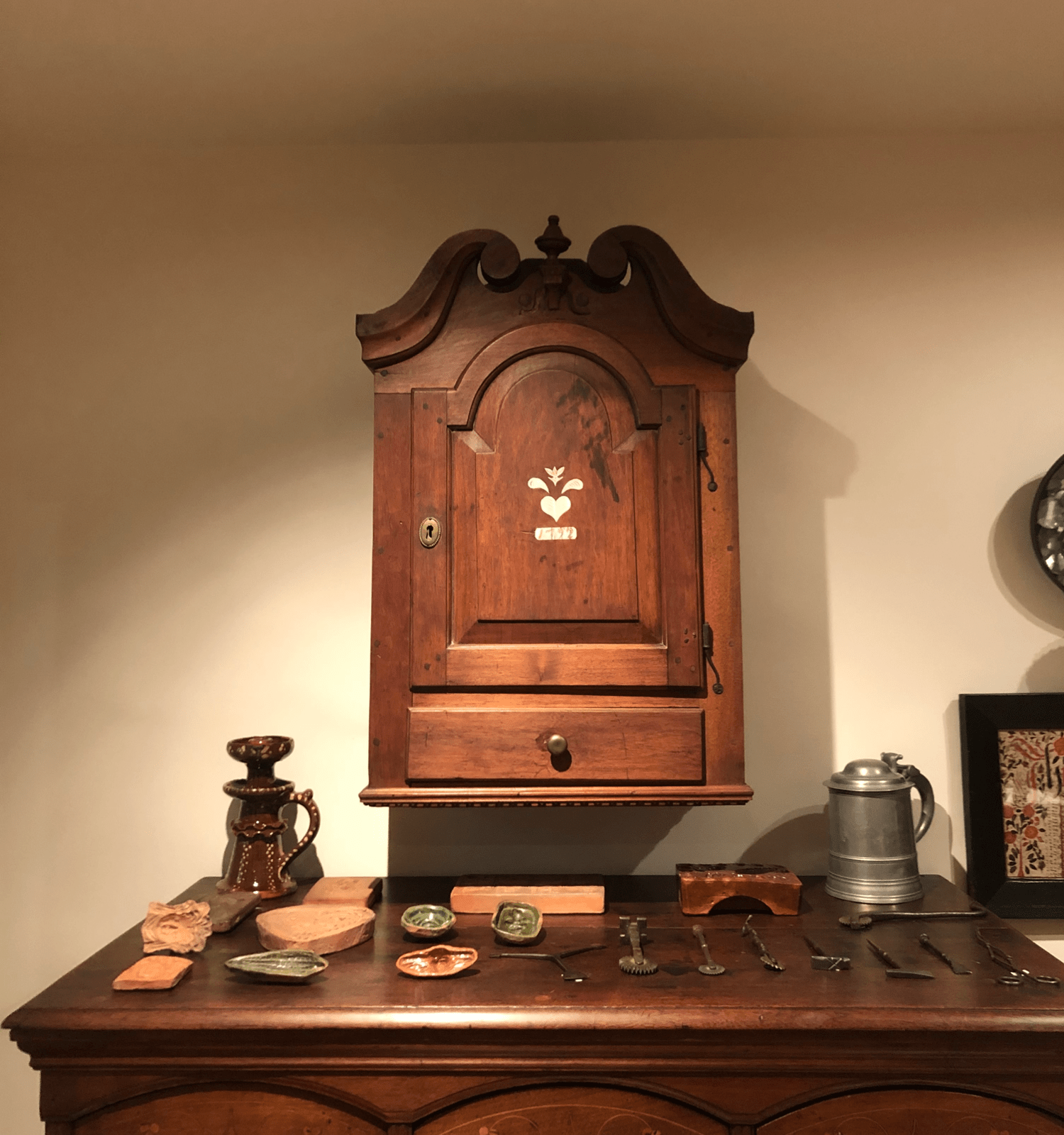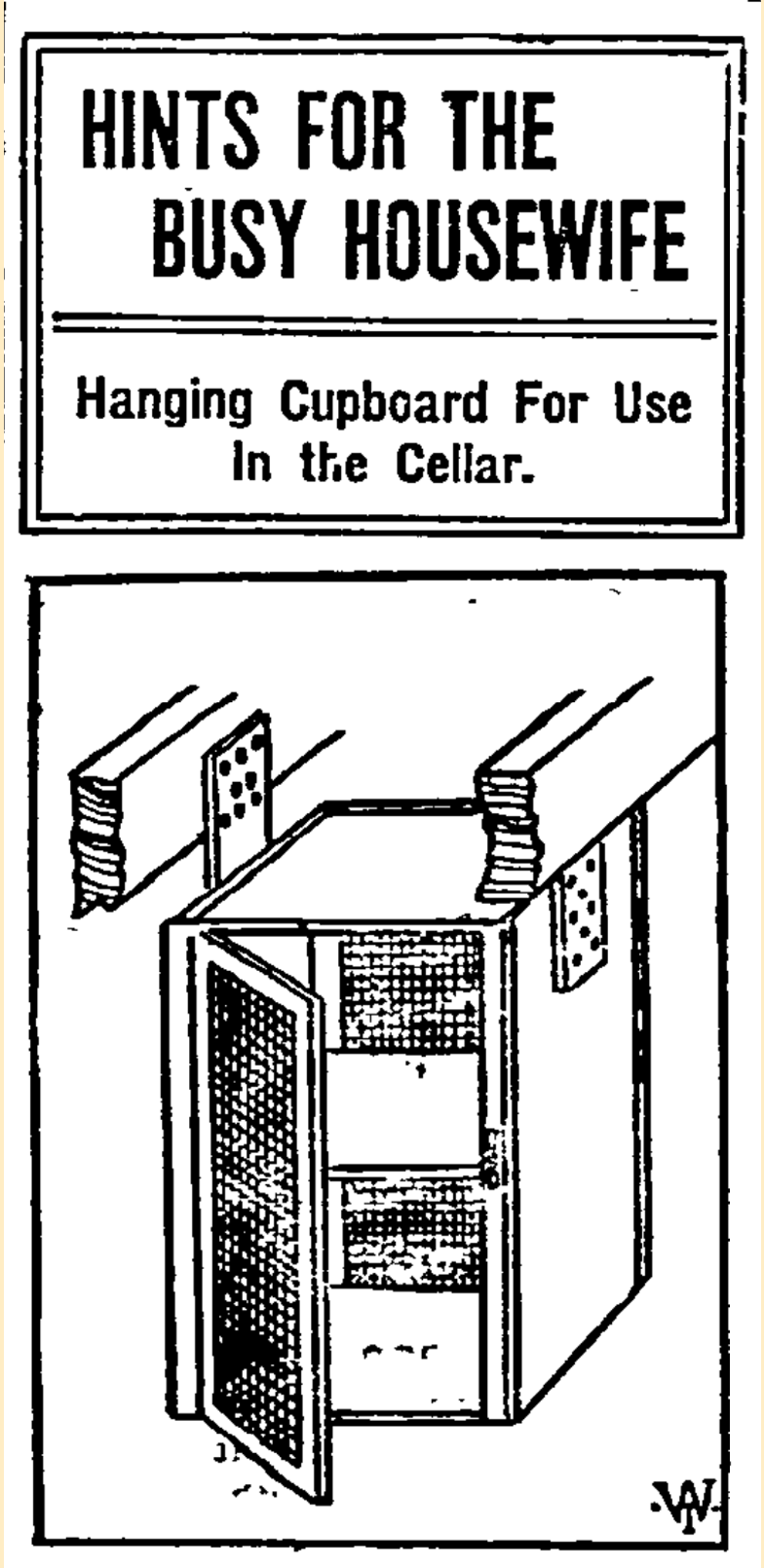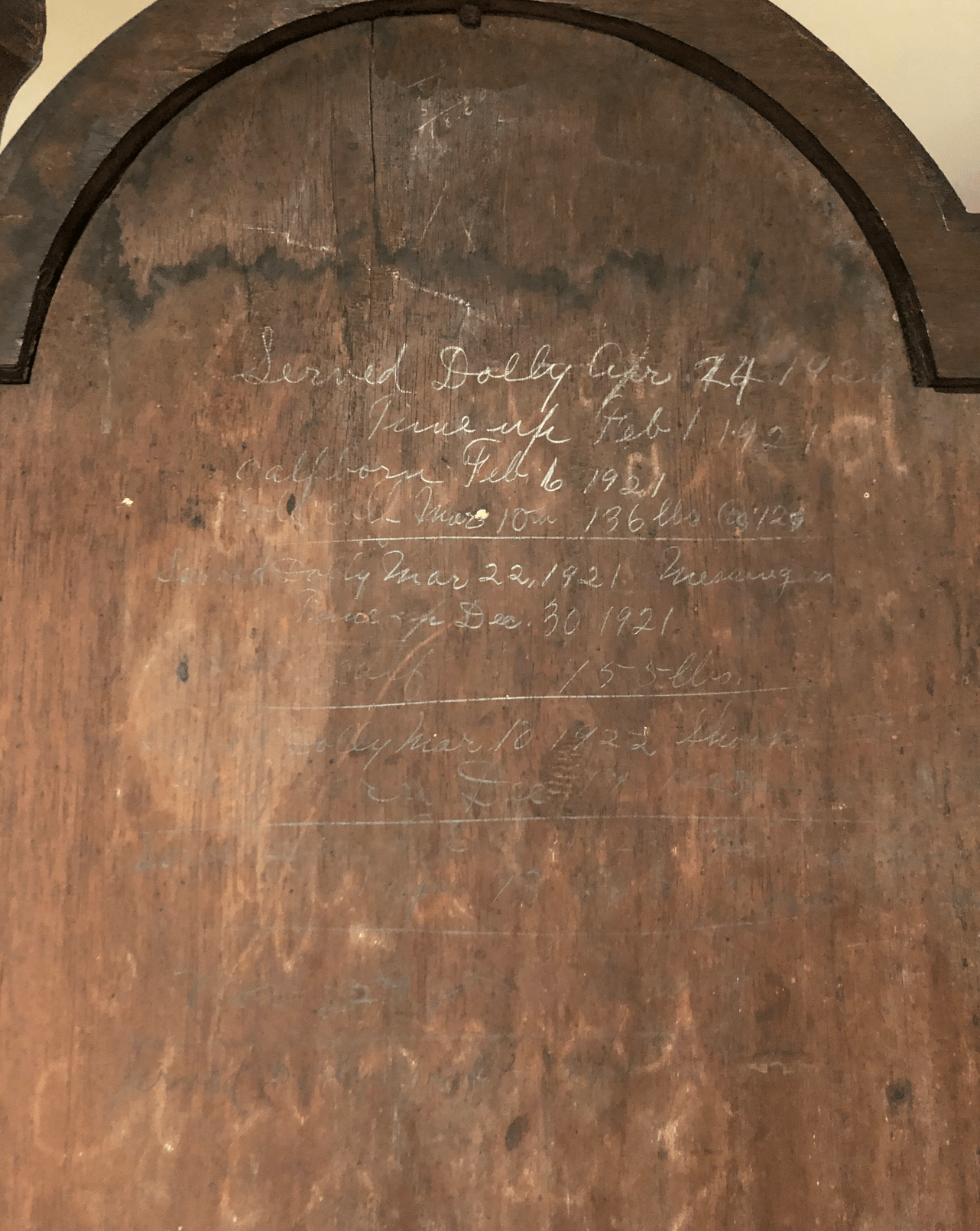The Various Lives of Objects: The Origins & Evolution of a Pennsylvania German Hanging Cupboard
By Jena Gilbert-Merrill, ’22
In Winterthur’s Pennsylvania Folk Art Room, a cupboard hangs on the wall in simple, warm humility. Yet despite its quiet appearance, this object contains many layers of stories. In researching this object, the history of this form, and the various contexts in which it has existed, I found that, despite its current state, this object has lived a number of lives and may not have always looked or functioned quite as it appears at this point in time. In true Pennsylvania German fashion, this cupboard may once have been covered with bright, colorful coats of paint, perhaps embellished and illuminated with fraktur-like decoration and housed in a kitchen, a stove room, basement or barn – details that are only revealed through close examination of the object itself and the clues it provides about its own history.

Hanging cupboard in situ in Winterthur’s Pennsylvania Folk Art Room. Walnut, pine, bone, brass, Lehigh, Pennsylvania, Winterthur Museum 1967.1169.
A handful of details in this hanging cupboard suggest layers of history, use, and reuse. The most intriguing to me is an inscription in pencil on the inside of the door which reads:
Served Dolly Apr. 24 1920
Time up Feb 1, 1921
calf born Feb. 6 1921
Sold calf Mar 10th, 136 lbs @ 12
Served Dolly Mar 22, 1921 Messing(er)?
Time up Dec. 30 1921
sold calf 155 lbs
Served Dolly Mar. 10 1922 Shooks
calf born Dec 17, 1923 weighed 121 lbs.
Served Dolly Feb. 1923 Hills calf born
Apr. 13 1923 ” Jan 28, 1924
Nov 22nd got electricity
Served Dolly Apr. 21 1924 Hills.
This cryptic message indicates that someone regularly used this cupboard in the 1920s, over a hundred years after the date carved into the front of the door. The inscription also implies that the cupboard was used not only to store food, tools, or other sundries, but also as something of a diary to mark important dates, such as the birth or sale of a calf, or when this household first acquired electricity.
The materiality of this object points to at least two distinct contexts of use. While there is no currently provenance associated with this object, the dovetails secured with wedges, the rattail hinges, the wooden pins, and the decorative motifs on the door together point to origins in an eighteenth-century Pennsylvania German cabinetmaker’s or carpenter’s shop. Painted furnishings were the norm in these workshops but paint was often stripped away by dealers and collectors in the nineteenth and twentieth centuries: this cupboard may have once been much more embellished than it currently is.
However, newspaper articles published between around 1875 to 1920 do mention hanging cupboards more frequently than earlier advertisements. The majority of these references are found in articles that praise the convenience of these small, wall-mounted cupboards, and give advice on what to store in them and instructions for how to construct and mount them. This seems to be an extension of the prescriptive literature aimed at middle to lower-middle class housewives advocating for organization and thrift in the home, encouraging people to make their own simple furnishings – such as hanging cupboards constructed from “an ordinary store box, a pair of hinges and two small pieces of fly screen.”1 Perhaps this literature also encouraged readers to repurpose or refashion existing pieces of furniture to accommodate new uses.

Illustration of a homemade hanging cupboard from advertisement in a 1910 issue of the Gulfport Daily Herald.
While examining corners and crevices on the front of the cupboard, I noticed a beige, gritty substance that looked like dirt or sand, as well as strands of something like straw or hay where I had expected to find traces of paint. I wondered if this cupboard may have hung in a barn where it bore witness to calves being born and to the mysterious Dolly being served, year after year, as the inscription explains. Microanalysis of the substances in these crevices and examination of infrared images would be necessary to identify the material and confirm this conjecture.
With the inscription, twentieth-century instructional literature, and straw-like substance in mind, a functional context for the secondary life of Winterthur’s cupboard comes into focus. This object that would likely have inhabited the Stube in a Pennsylvania German household did not lose its great potential for storing small items: its utility was expanded by a resourceful owner who used the inner door as a ledger or diary, and may have found use for it outside the kitchen, perhaps in a barn. We cannot know what else this object may have been through between its creation in 1792 and its use in the 1920s, what other needs it met or events it witnessed. However, its presence in Winterthur’s collection constitutes what is at least the tertiary life of this object. Tracing the history of this form while following the particular cues of the object itself sheds light on how this cupboard may have been used over the course of its lives, reflecting the people who used it, related to it, and lived with it over time.
- “HINTS FOR THE BUSY HOUSEWIFE. Hanging Cupboard for Use in the Cellar.” Gulfport Daily Herald. November 3, 1910.; “Cupboard from Wooden Box Useful Little Receptacle that Will Not Cost Much to Make and Is Extremely Handy.” Broad Ax. September 13, 1919. ↩


Leave a Reply